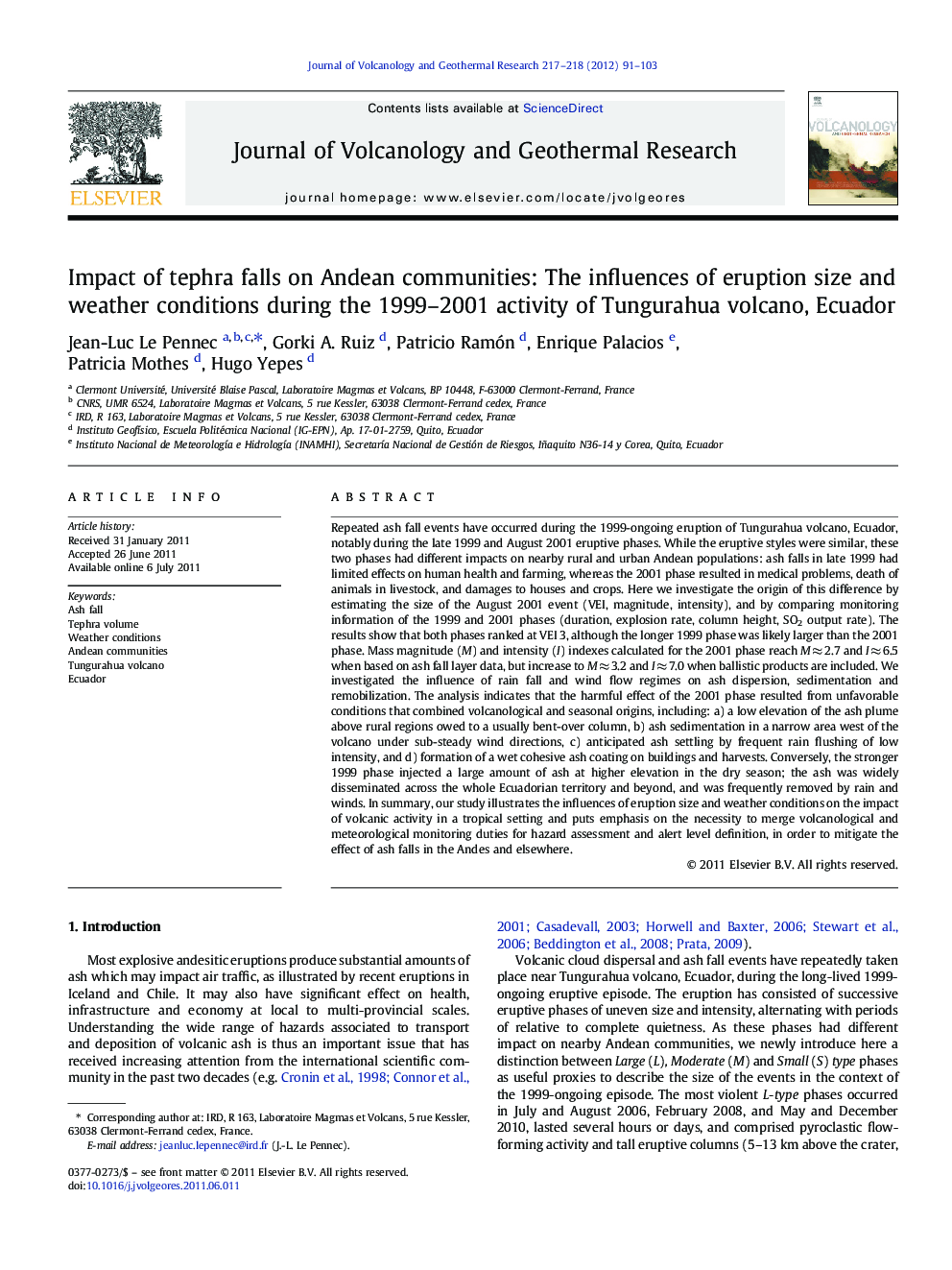| کد مقاله | کد نشریه | سال انتشار | مقاله انگلیسی | نسخه تمام متن |
|---|---|---|---|---|
| 4714978 | 1638388 | 2012 | 13 صفحه PDF | دانلود رایگان |

Repeated ash fall events have occurred during the 1999-ongoing eruption of Tungurahua volcano, Ecuador, notably during the late 1999 and August 2001 eruptive phases. While the eruptive styles were similar, these two phases had different impacts on nearby rural and urban Andean populations: ash falls in late 1999 had limited effects on human health and farming, whereas the 2001 phase resulted in medical problems, death of animals in livestock, and damages to houses and crops. Here we investigate the origin of this difference by estimating the size of the August 2001 event (VEI, magnitude, intensity), and by comparing monitoring information of the 1999 and 2001 phases (duration, explosion rate, column height, SO2 output rate). The results show that both phases ranked at VEI 3, although the longer 1999 phase was likely larger than the 2001 phase. Mass magnitude (M) and intensity (I) indexes calculated for the 2001 phase reach M ≈ 2.7 and I ≈ 6.5 when based on ash fall layer data, but increase to M ≈ 3.2 and I ≈ 7.0 when ballistic products are included. We investigated the influence of rain fall and wind flow regimes on ash dispersion, sedimentation and remobilization. The analysis indicates that the harmful effect of the 2001 phase resulted from unfavorable conditions that combined volcanological and seasonal origins, including: a) a low elevation of the ash plume above rural regions owed to a usually bent-over column, b) ash sedimentation in a narrow area west of the volcano under sub-steady wind directions, c) anticipated ash settling by frequent rain flushing of low intensity, and d) formation of a wet cohesive ash coating on buildings and harvests. Conversely, the stronger 1999 phase injected a large amount of ash at higher elevation in the dry season; the ash was widely disseminated across the whole Ecuadorian territory and beyond, and was frequently removed by rain and winds. In summary, our study illustrates the influences of eruption size and weather conditions on the impact of volcanic activity in a tropical setting and puts emphasis on the necessity to merge volcanological and meteorological monitoring duties for hazard assessment and alert level definition, in order to mitigate the effect of ash falls in the Andes and elsewhere.
► We investigate two early eruptive phases (late 1999 and August 2001) of the activity at Tungurahua volcano, Ecuador.
► Ash falls more severely affected nearby communities in Aug. 2001 than late 1999, although eruptive styles were similar.
► Both phases ranked at VEI 3, but the late 1999 event was the largest among the two phases.
► The weather data highlight the importance of rain fall and wind flow regimes, and seasonality on ash dispersal and impact.
► Combining volcanological and meteorological monitoring duties is central for hazard assessment and alert level definition.
Journal: Journal of Volcanology and Geothermal Research - Volumes 217–218, 1 March 2012, Pages 91–103